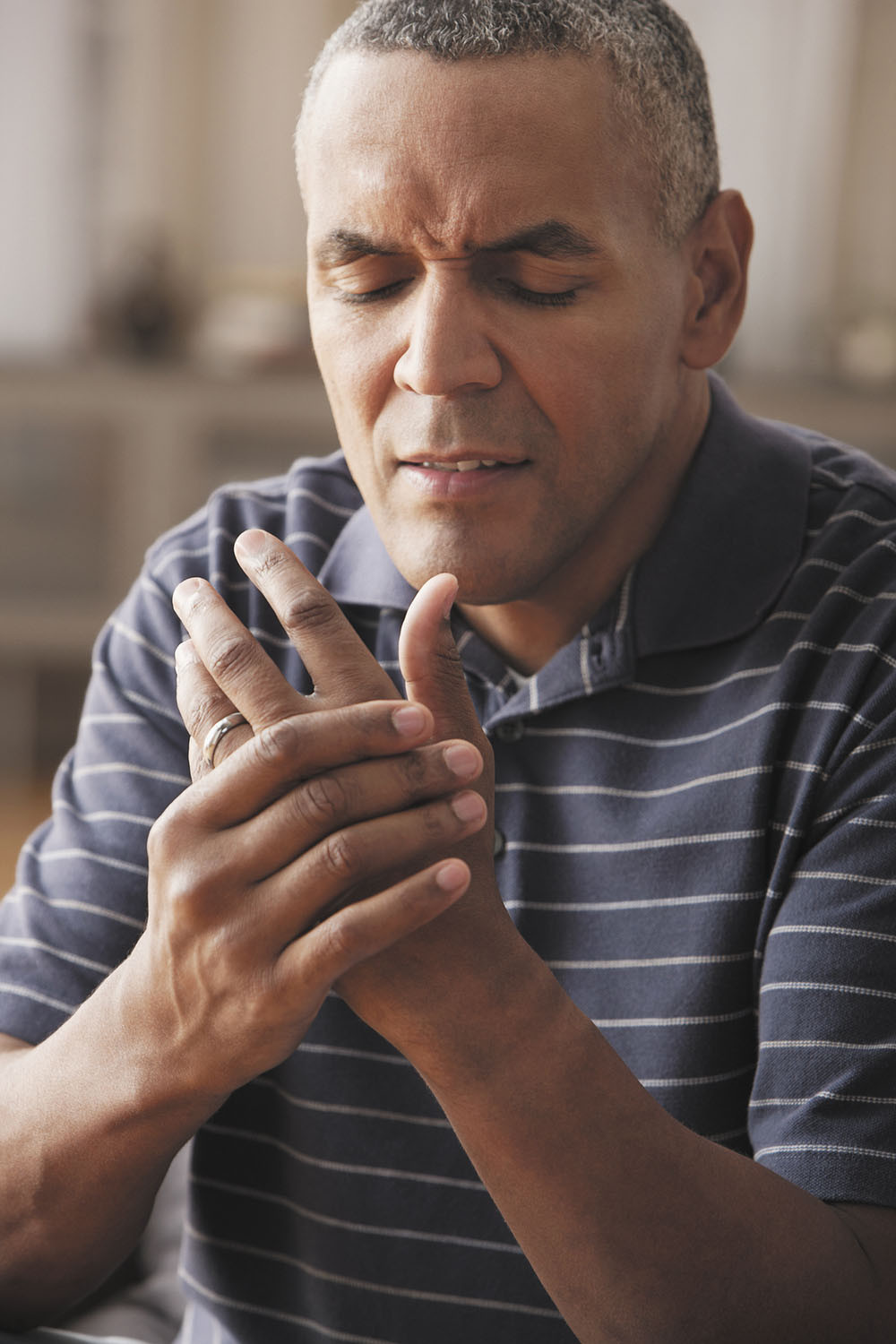Getting a grip on hand osteoarthritis
Can you do anything about hand and finger joint pain?
 Everyone experiences the occasional painful hands and sore fingers, but when osteoarthritis strikes, it can put a hold on many aspects of your life.
Everyone experiences the occasional painful hands and sore fingers, but when osteoarthritis strikes, it can put a hold on many aspects of your life.
"As osteoarthritis progresses, you may lose some hand mobility, like the ability to grasp and hold objects," says Dr. Robert Shmerling, clinical chief of rheumatology at Harvard-affiliated Beth Israel Deaconess Medical Center and senior faculty editor at Harvard Health Publishing. "Over time, osteoarthritis can make the joints deformed, so it's harder to open and close your hands."
Wear and tear
Osteoarthritis, the most common joint disorder, is known as "wear and tear" arthritis. It causes the protective cartilage on the ends of your bones to break down and wear away. Over time, the bones in the joint rub together and trigger pain, swelling, and inflammation.
Osteoarthritis most commonly affects three parts of the hand:
- the base of the thumb, where the thumb and wrist join
- the joint closest to the fingertip
- the middle joint of the finger.
Flare-ups tend to come and go, and the severity can range from dull aches to sharp pains. It may sound like urban legend, but changes in weather, such as humidity and barometric pressure, can trigger symptoms in some people, although it's not known why. Time of day also can play a role, as stiffness tends to be worse in the morning.
What increases your risk for hand osteoarthritis? Father Time is the main culprit — about 25% of all men experience some degree of hand osteoarthritis pain and stiffness by age 85. But other factors can play a part, such as a family history of osteoarthritis and past hand injuries, especially fractures near a joint.
How to handle possible surgeryIf mobility problems or pain from osteoarthritis becomes so severe it affects your quality of life, then surgery may be necessary. Here, the damaged cartilage in the joint is removed and the bones then fused together. Another option is joint replacement, which involves removing the damaged joint and replacing it with an implant. But keep in mind that surgery is not a miracle cure. "It doesn't reverse the damage caused by osteoarthritis, and you don't regain normal function. And with fusion, you lose all motion at that joint," says rheumatologist Dr. Robert Shmerling, at Harvard-affiliated Beth Israel Deaconess Medical Center. |
Treatment options
A physical exam and x-ray often is enough to confirm hand osteoarthritis. Unfortunately, you cannot reverse osteoarthritis or even slow its progression in most cases. But that doesn't mean you're defenseless. The following strategies may help manage flare-ups.
Medication. Mild inflammation and pain can be treated with over-the-counter nonsteroidal anti-inflammatory drugs (NSAIDs) like naproxen (Aleve) and ibuprofen (Advil) or pain relievers like acetaminophen (Tylenol). They can be used either as a pill, or — for NSAIDs — a topical ointment or cream, and are moderately helpful. "Take these drugs as directed to help avoid harmful side effects, and let your doctor know if you use them on a regular basis," says Dr. Shmerling.
Another drug option for severe pain is corticosteroid injections into the joints. These can provide weeks or even months of relief, but they can be painful, cause tendon damage, and worsen the breakdown of cartilage if overused. (Talk with your doctor about whether this is an option for you.)
Splints and braces. Hand braces and splints found in drugstores immobilize your hand and fingers and keep them in a less painful position. They also can be worn at night, if flare-ups disturb your sleep. "But don't wear splints or braces all the time, as this can make the affected joints stiffer," says Dr. Shmerling.
Heat and cold therapy. Icing sore fingers can reduce swelling and inflammation and numb the pain until it subsides. A warm compress can help joints that are not inflamed.
Modifications. Reduce the stress placed on your hands. For instance, carry bags over your forearms. Ergonomic tools like jar and bottle openers, oversized and easy-to-grip utensils, and aluminum grabbers can help you perform many daily tasks that require gripping and twisting.
Hand therapy. Hand exercises and physical therapy may help strengthen hand muscles and increase finger range of motion. "Ask your doctor about seeing an occupational therapist," says Dr. Shmerling. "He or she can create specialized exercises that can best help maintain hand function."
Image: SelectStock/Getty Images
Disclaimer:
As a service to our readers, Harvard Health Publishing provides access to our library of archived content. Please note the date of last review or update on all articles.
No content on this site, regardless of date, should ever be used as a substitute for direct medical advice from your doctor or other qualified clinician.















